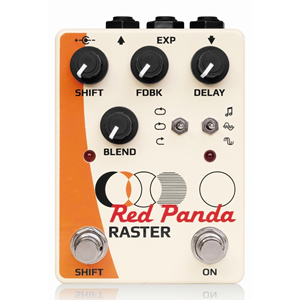

There are two random waveforms for glitchy pitch jumps, wow and flutter, and broken tape deck effects. The Raster’s modulation section has seven waveforms that can be assigned to delay time, pitch shift, or effect level (for tremolo). It can be pushed to extremes for ring modulation and inharmonic shifted delays that distort and break apart. At subtle settings, repeats evolve in a way that sounds natural, but different from analog delays.īeyond pitch shifting, a combination phase/frequency shifter creates subtle evolving repeats, dissonant harmonies, and barber pole flanging. The left and right channels can be shifted by the same amount, a ratio, or opposite directions. The detune setting can dial in micro pitch shifts and chorused repeats. Pitch shifting repeats up or down in semitone steps creates tempo-synced arpeggios and alien organ sounds. The two delay channels can be arranged in series, parallel or ping pong. The left and right delay times can be set as a ratio, so a single knob changes both in sync. A tone control sweeps from dark analog-style repeats to digital clarity and emphasizes the attack at higher settings. Knob responses are carefully tuned for exploration of self-oscillation and feedback on the verge of blowing up. The feedback control has infinite repeats at 3 o’clock and chaotic, textured feedback loops at higher levels.

Three delay ranges allow you to precisely dial in resonant feedback sounds and instantly change delay time with rhythmic shifts. The core of the Raster™ is a clean delay with up to 1600 milliseconds of delay time. It delivers a wide range of sounds including modulated and harmonized delays, reverse delays, chorus, arpeggios, infinite descents, chaotic self-oscillation, and continuously evolving soundscapes. Forward or reverse delay can be shifted once or have continuously shifted repeats. The Raster™ is a digital delay with a pitch and frequency shifter integrated into the feedback loop.


 0 kommentar(er)
0 kommentar(er)
